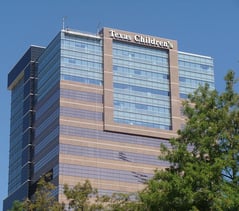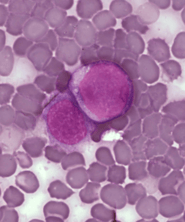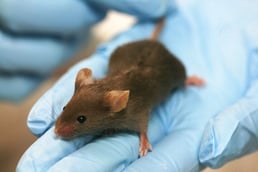
Researchers from the University of California, Berkeley are one of many groups benefiting from funding from the BRAIN Initiative, founded by President Obama in 2013. The Berkeley research team, in partnership with a team from the Allen Institute for Brain Science in Seattle, have received $65.5 million from the National Institutes of Health (NIH) to catalog all the cells of a mouse brain with the goal of using this catalog to later classify all cells in the human brain. (Image courtesy of Wikimedia Commons)
Read More
Tags:
University of California Berkeley,
University of California,
BioResearch Product Faire Event,
NIH funding,
UCBerk,
2018,
BRAIN Initiative

The Jan and Dan Duncan Neurological Research Institute (NRI) at Texas Childrens Hospital in Houston is a leading research institution continuously making breakthroughs in the field of neurological research on topics such as autism, Alzheimer's and epilepsy. Now, thanks to Charif Souki, co-founder of Tellurian, the NRI will have an additional $10 million to further their life science research. (Image courtesy of Zereshk via Wikimedia Commons)
Read More
Tags:
new research funding,
tmc,
BioResearch Product Faire Event,
Houston,
TX,
Neurological Disorder,
Texas Childrens Hospital,
Neurological Research
.jpg) The University of South Florida is a leading research institution in Tampa that conducts cutting-edge research into all life science fields and steadily publishes research breakthroughs. The campus is currently in the process of expanding to provide even more space and resources to life scientists. Construction on the new school of medicine campus has begun, and is expected to be completed in 2019.
The University of South Florida is a leading research institution in Tampa that conducts cutting-edge research into all life science fields and steadily publishes research breakthroughs. The campus is currently in the process of expanding to provide even more space and resources to life scientists. Construction on the new school of medicine campus has begun, and is expected to be completed in 2019.
Read More
Tags:
FL,
Tampa,
BioResearch Product Faire Event,
new building expansion,
University of South Florida,
USF,
USF Health Morsani College of Medicine,
2018,
new building construction,
Morsani College of Medicine and Heart Institute

Of the four main types of Leukemia, Acute Myeloid Leukemia (AML) diagnoses make up nearly one-third of new leukemia cases and is most likely to occur in adults. Although common cancer treatment methods are used for AML patients, only about half go into remission after chemotherapy treatments. Factors such as age and overall health contribute to these remission rates. Researchers at top life science institutions around the world continually study AML to gain better understandings of the biology of this cancer that can lead to new and more effect treatment methods. (Image courtesy Wikimedia Commons)
Read More
Tags:
CA,
Leukemia,
new research funding,
cancer research,
San Diego,
SDVS,
UCSD,
Biotechnology Vendor Showcase,
cancer research funding,
2018,
AML Research,
Acute Myeloid Leukemia
 The state of Texas is striving to increase cancer research capabilities and opportunities with the Cancer Prevention and Research Institute of Texas (CPRIT). One method that CPRIT uses to increase cancer research opportunities throughout the state is through the institutes core facility support awards, which provide more funding and opportunities for researchers from different Texas institutions. Recently, researchers from Texas A&M University received a $5.7 million grant from CPRIT to expand cancer research at the university through this additional core facility funding. (Image courtesy of Aggie0083 via Wikimedia Commons)
The state of Texas is striving to increase cancer research capabilities and opportunities with the Cancer Prevention and Research Institute of Texas (CPRIT). One method that CPRIT uses to increase cancer research opportunities throughout the state is through the institutes core facility support awards, which provide more funding and opportunities for researchers from different Texas institutions. Recently, researchers from Texas A&M University received a $5.7 million grant from CPRIT to expand cancer research at the university through this additional core facility funding. (Image courtesy of Aggie0083 via Wikimedia Commons)
Read More
Tags:
Texas A&M University,
Texas Medical Center,
Texas,
TAMU,
tmc,
BioResearch Product Faire Event,
Houston,
TX,
cancer research funding,
2018,
Baylor College of Medicine,
core facility funding

In 2013, president Barack Obama initiated a public-private partnership - the BRAIN Initiative - to provide more funding and opportunities for institutions and organizations to study the human brain. This project is led by the National Institutes of Health and includes a new five-year collaborative project, the BRAIN Initiative Cell Census Network consortium that is aiming to identify all cells in a mouse brain to create a catalog of these cells.
Read More
Tags:
CA,
University of Southern California,
USC,
BioResearch Product Faire Event,
NIH award,
2018,
brain cell research,
BRAIN Initiative
 White blood cells help the immune system protect the body from infections and diseases. Along with attacking infections, white blood cells also have the ability to bring other cells together to help in the fight. With these known abilities of white blood cells, life science researchers have been researching ways to amplify the abilities of these cells to target specific illnesses, such as tumors.
White blood cells help the immune system protect the body from infections and diseases. Along with attacking infections, white blood cells also have the ability to bring other cells together to help in the fight. With these known abilities of white blood cells, life science researchers have been researching ways to amplify the abilities of these cells to target specific illnesses, such as tumors.
Read More
Tags:
CA,
University of California Davis Medical Center,
University of California Davis,
Cancer Treatment,
Immune System,
UCDMC,
Sacramento,
NIH funding,
2018
 Tuberculosis (TB) is an infectious disease that affects nearly 1/3 of the world's population. Although eradication efforts have been undertaken, none have been successful and TB is still a leading cause around the world. Even though there are treatment methods for this infection, they are not always successful at killing the bacteria that cause TB. This provides life science researchers with more questions and research topics, to better understand the infection and bacteria and what causes treatments to work occasionally, but not always
Tuberculosis (TB) is an infectious disease that affects nearly 1/3 of the world's population. Although eradication efforts have been undertaken, none have been successful and TB is still a leading cause around the world. Even though there are treatment methods for this infection, they are not always successful at killing the bacteria that cause TB. This provides life science researchers with more questions and research topics, to better understand the infection and bacteria and what causes treatments to work occasionally, but not always
Read More
Tags:
tuberculosis,
University of Massachusetts Amherst,
new research funding,
MA,
NIH funding,
Amherst,
UMASS,
2018,
TB Research
 The brain is a fragile organ that can be damaged by different impacts to the head, including sports injuries or car crashes. Thousands of people arediagnosed with traumatic brain injuries (TBI) each year,stemming from different head impacts. The National Institute on Disability, Independent Living, and Rehabilitation Research (NIDILRR) awards 16 US institutions a TBI Model System grant each year to provide researchers and clinicians more opportunities to study these injuries.
The brain is a fragile organ that can be damaged by different impacts to the head, including sports injuries or car crashes. Thousands of people arediagnosed with traumatic brain injuries (TBI) each year,stemming from different head impacts. The National Institute on Disability, Independent Living, and Rehabilitation Research (NIDILRR) awards 16 US institutions a TBI Model System grant each year to provide researchers and clinicians more opportunities to study these injuries.
Read More
Tags:
MSSM,
BioResearch Product Faire Event,
NY,
Mt. Sinai,
Icahn School of Medicine,
2018,
Traumatic Brain Injury Research,
nih research funding,
NIDILRR
 Like most forms of cancer, brain cancers are frequently treated with chemotherapy and radiation therapy. Although these treatments can be effective, many times they are not. Scientists around the world study different types of brain cancers to develop new treatment methods.
Like most forms of cancer, brain cancers are frequently treated with chemotherapy and radiation therapy. Although these treatments can be effective, many times they are not. Scientists around the world study different types of brain cancers to develop new treatment methods.
Read More
Tags:
CA,
University of California San Diego,
cancer research,
SDVS,
UCSD,
Biotechnology Vendor Showcase Event,
2018,
Zika virus,
Brain cancer




.jpg) The University of South Florida is a leading research institution in Tampa that conducts cutting-edge research into all life science fields and steadily publishes research breakthroughs. The campus is currently in the process of expanding to provide even more space and resources to life scientists. Construction on the new school of medicine campus has begun, and is expected to be completed in 2019.
The University of South Florida is a leading research institution in Tampa that conducts cutting-edge research into all life science fields and steadily publishes research breakthroughs. The campus is currently in the process of expanding to provide even more space and resources to life scientists. Construction on the new school of medicine campus has begun, and is expected to be completed in 2019.


 White blood cells help the immune system protect the body from infections and diseases. Along with attacking infections, white blood cells also have the ability to bring other cells together to help in the fight. With these known abilities of white blood cells, life science researchers have been researching ways to amplify the abilities of these cells to target specific illnesses, such as tumors.
White blood cells help the immune system protect the body from infections and diseases. Along with attacking infections, white blood cells also have the ability to bring other cells together to help in the fight. With these known abilities of white blood cells, life science researchers have been researching ways to amplify the abilities of these cells to target specific illnesses, such as tumors.  Tuberculosis (TB) is an infectious disease that affects nearly
Tuberculosis (TB) is an infectious disease that affects nearly  The brain is a fragile organ that can be damaged by different impacts to the head, including sports injuries or car crashes. Thousands of people arediagnosed with traumatic brain injuries (TBI) each year,stemming from different head impacts. The National Institute on Disability, Independent Living, and Rehabilitation Research (NIDILRR) awards 16 US institutions a TBI Model System grant each year to provide researchers and clinicians more opportunities to study these injuries.
The brain is a fragile organ that can be damaged by different impacts to the head, including sports injuries or car crashes. Thousands of people arediagnosed with traumatic brain injuries (TBI) each year,stemming from different head impacts. The National Institute on Disability, Independent Living, and Rehabilitation Research (NIDILRR) awards 16 US institutions a TBI Model System grant each year to provide researchers and clinicians more opportunities to study these injuries. Like most forms of cancer, brain cancers are frequently treated with chemotherapy and radiation therapy. Although these treatments can be effective, many times they are not. Scientists around the world study different types of brain cancers to develop new treatment methods.
Like most forms of cancer, brain cancers are frequently treated with chemotherapy and radiation therapy. Although these treatments can be effective, many times they are not. Scientists around the world study different types of brain cancers to develop new treatment methods.